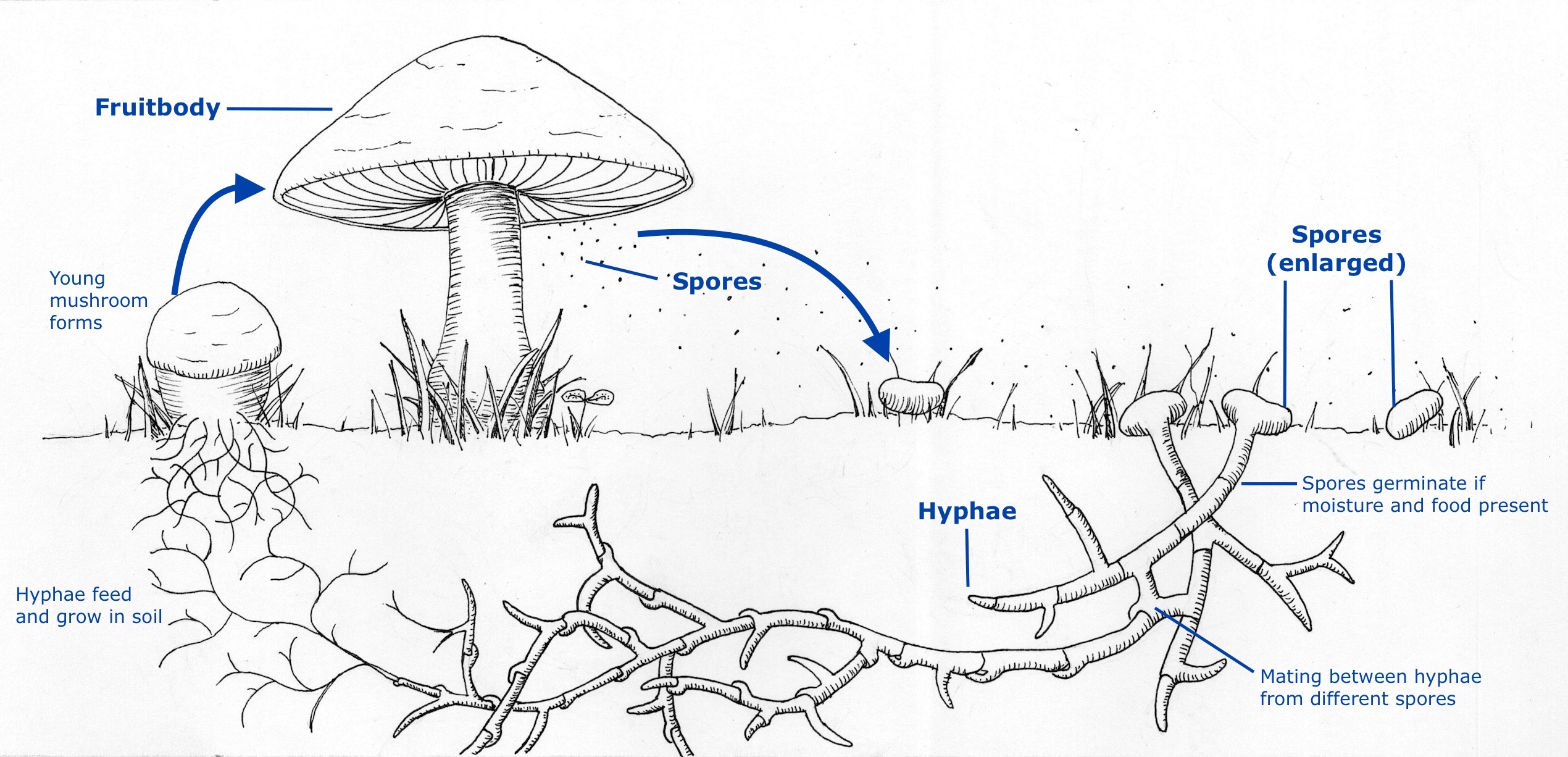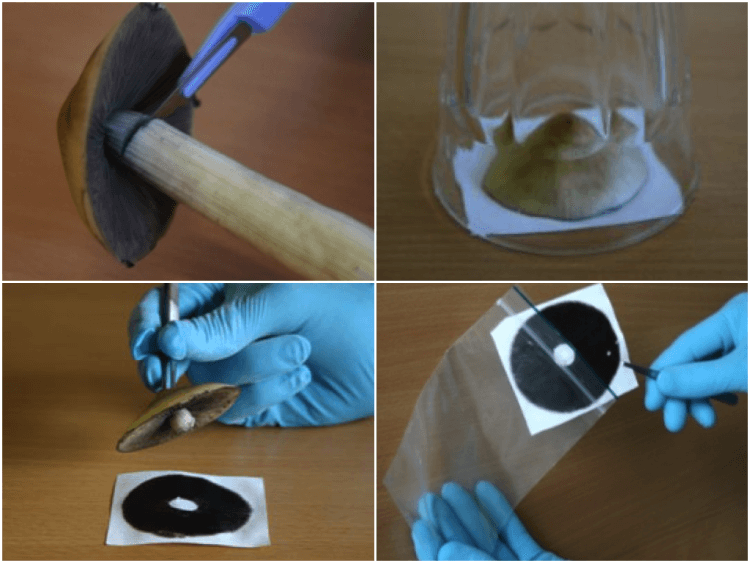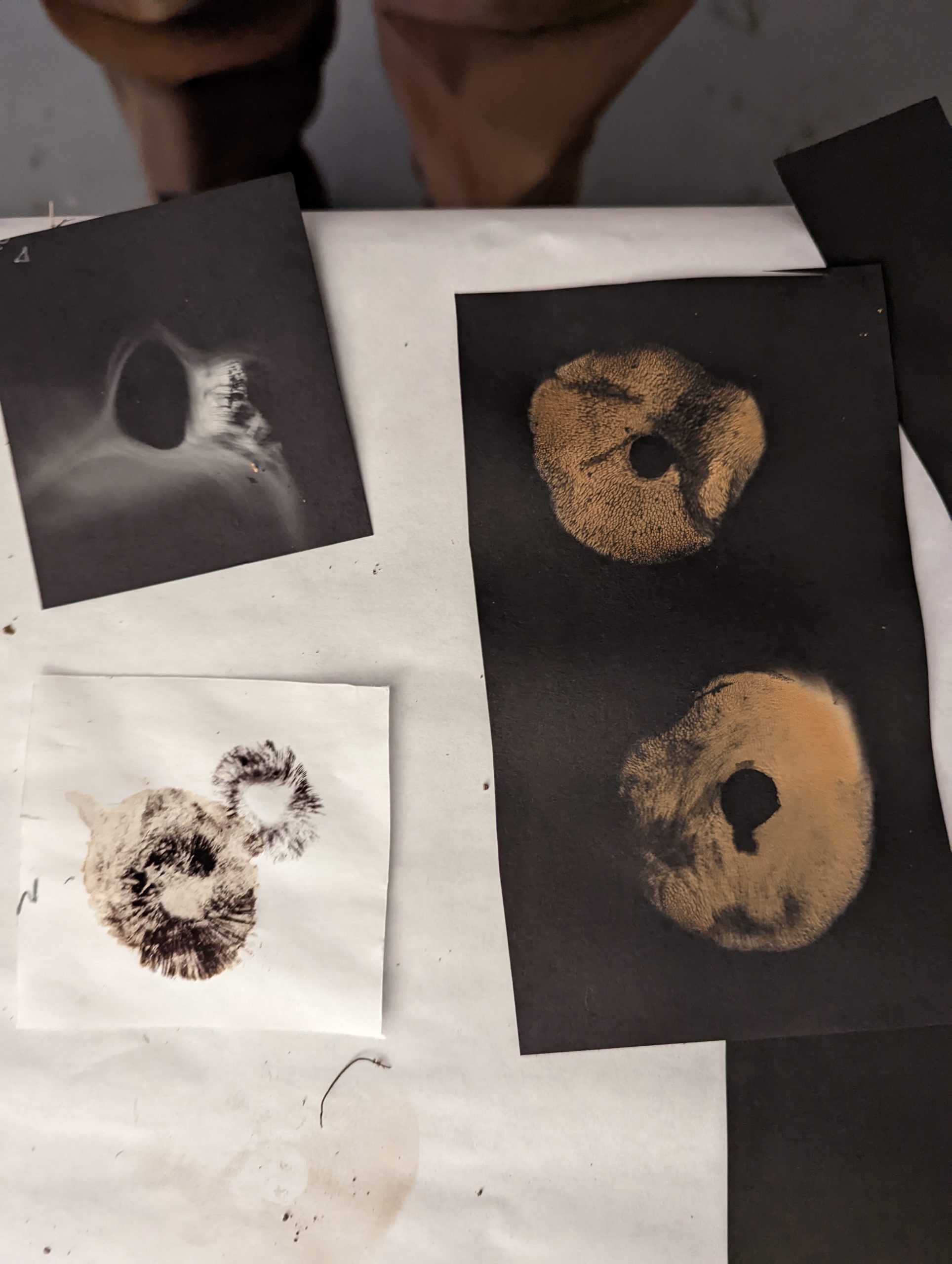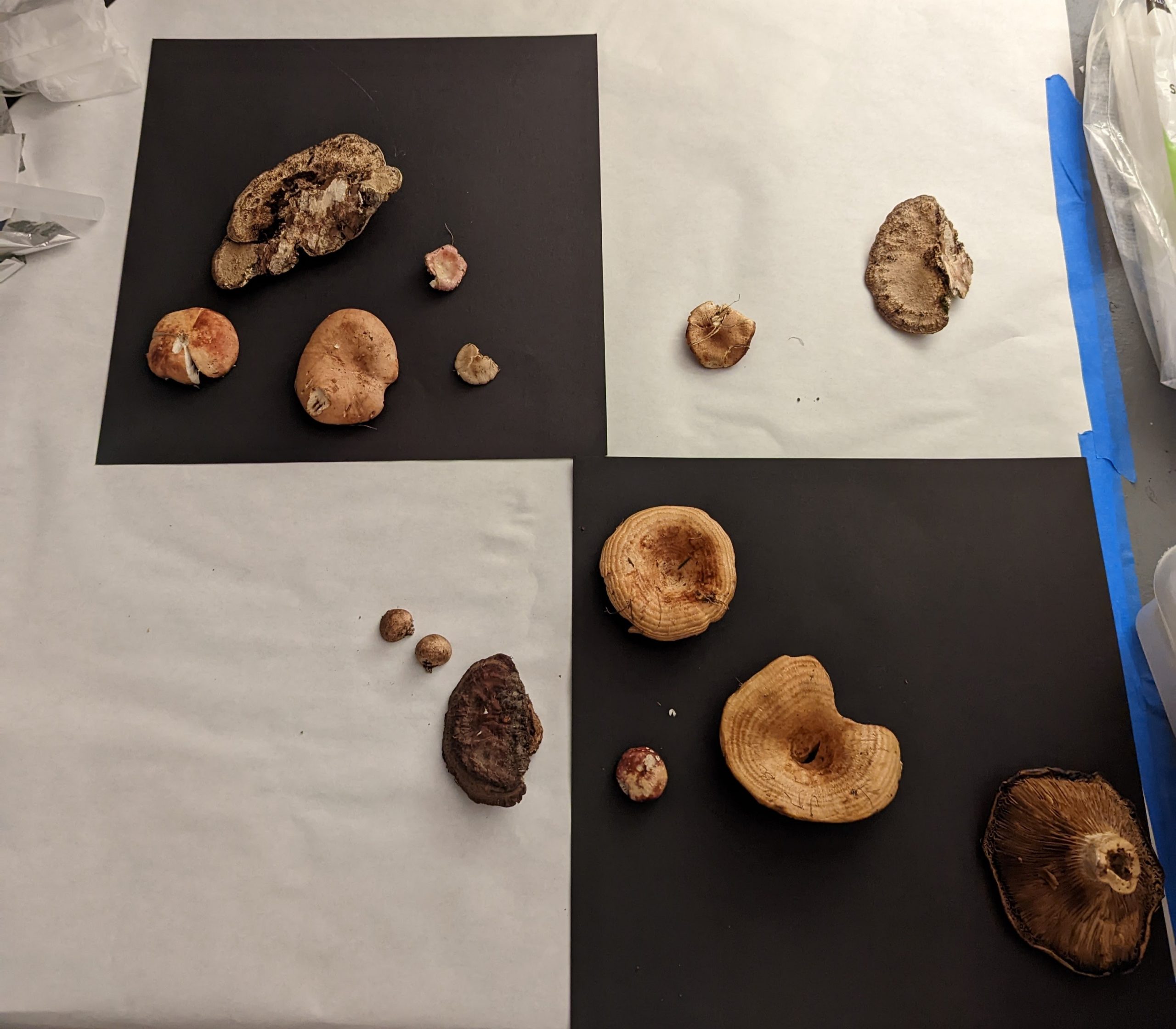In this project I created a typology of spore prints from wild mushrooms foraged in Homewood cemetery, and displayed them with the names of the buried they were found closest to.
My question was to see if I could capture environmental the impact of human practices around death. This question became a typology of how to represent life coming out of death.

In the life cycle of a mushroom, the purpose of the fruitbody stem/cap shape is to drop spores from gills on the underside of the cap. Almost all mushrooms spread hundreds of thousands of small spores to be carried by the wind and reproduce away from the fruiting body. Spore printing takes advantage of this unique method of reproduction.

Spore printing is done by cutting off the stem, covering the mushroom cap, and letting it sit for 2-24 hours as the spores fall. Spore printing is mainly used by foragers for mushroom-identification, as the color of a mushroom’s spores may be one of the only differences between an edible mushroom and a poisonous lookalike. Spore printing is also a tool for archiving and preservation as the spores can lay dormant for years in a well maintained spore print, ready to restart the life cycle of the fungus.

I took inspiration from the cyanotype photography of Anna Atkins and Wilson “Snowflake” Bentley. Both are dealing with very delicate natural phenomena. I find a specific relationship with William Bentley because of the delicate nature of both spore prints and snowflakes. In order to capture them you have to disturb them as little as possible. A single finger smudge can completely ruin any image you’re trying to create. I also find kinship with Anna Atkin’s photography as it is specifically about the relationship to ecology and setting. Mushroom and plant species vary across the world, but only in western Pennsylvania will you find this specific set of mushrooms

The hardest part of this project was organization of my assets. I lost track of what prints were produced by what mushrooms multiple times, had I set up a system of documentation early on I could have saved myself a lot of pain later. Another challenge with the spore printing method is that it is variable on the age of the mushroom collected. A mushroom picked too young won’t drop it’s full set of spores, while a mushroom picked too old won’t show up on the paper at all. I ended up gathering double the amount of mushrooms than spore prints.


I missed many opportunities for a more refined and full typology by being almost entirely focused on foraging and scanning. I didn’t have enough time to consider presentation and storytelling fully. Finding a connection to the prints and the gravesites remains a challenge. Despite this I gained a strong connection to the land in Pittsburgh as well as connections with other mushroom hunters in Pittsburgh



